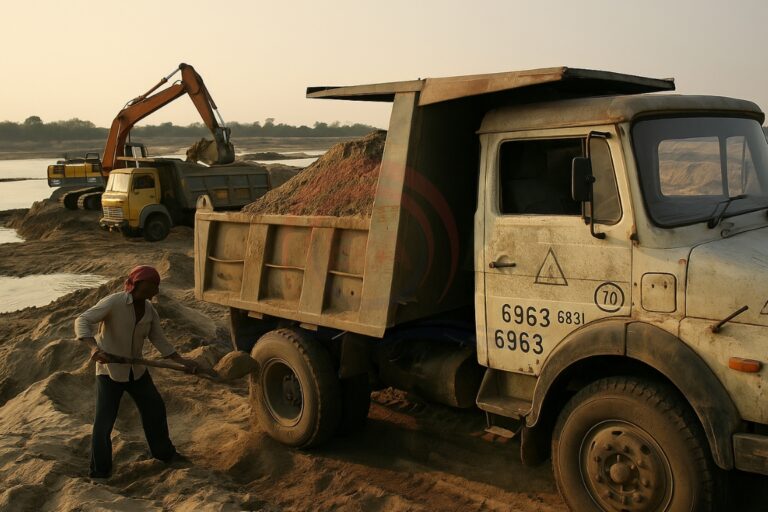The Supreme Court has ruled that no clearance for sand mining in riverbeds can be granted without a scientific replenishment study. The judgment upheld an NGT order cancelling environmental clearance for a sand mining project in Jammu & Kashmir.
Key Highlights of the Judgment
- Replenishment Study Mandatory: Scientific assessment of sand availability and replenishment rates must be done before granting approval.
- District Survey Report (DSR): Made essential for identifying sustainable extraction levels.
- Reinforces NGT’s Role: Strengthens the tribunal’s authority in regulating environmental clearances.
- Precedent for Future: Establishes that approvals without replenishment studies are invalid.

Sand Mining in India
- Definition: Extraction of sand from riverbeds, floodplains, beaches, and coasts for construction, industry, and reclamation projects.
- Uses:
- Core input for cement, concrete, roads, and dams.
- Land reclamation and coastal projects.
- Industrial use in glass-making, foundry molds, and silicon industry.
- High demand due to rapid infrastructure growth.
Environmental Impacts of Sand Mining
- Flooding Risk: Changes river flow, erodes banks, and increases chances of floods.
- Damage to Aquatic Life: Increased turbidity harms organisms like corals and fish.
- Loss of Livelihoods: Affects fisheries and dependent communities.
- Water Stress: Sand acts as a sponge that helps recharge groundwater. Over-mining lowers water tables.
- Landscape Degradation: Alters river morphology and reduces ecological balance.
Regulation of Sand Mining in India
- Governed under the Mines and Minerals (Development and Regulation) Act, 1957 (MMDR Act).
- States/UTs have powers to frame rules for mining, transport, and storage of sand.
- Guidelines issued by MoEFCC: Sustainable Sand Mining Guidelines, 2016. Enforcement & Monitoring Guidelines, 2020.
- District Survey Report (2018): Basis for clearance; updated every 5 years.
- Approval Process: Scrutiny by State Expert Appraisal Committees (SEACs).
Significance of the Judgment
- Strengthens Environmental Governance: Ensures that mining is science-based, not arbitrary.
- Protects Ecosystems: Safeguards rivers, groundwater, and aquatic life.
- Institutional Accountability: Empowers NGT and State authorities in monitoring compliance.
- Sustainable Development: Balances construction demand with ecological protection.
Conclusion:
The SC’s directive is a landmark for sustainable sand mining in India. By making replenishment studies and DSR mandatory, it prevents unchecked exploitation of rivers, safeguards water security, and enhances environmental accountability. This judgment sets a new benchmark for balancing development needs with ecological responsibility.





